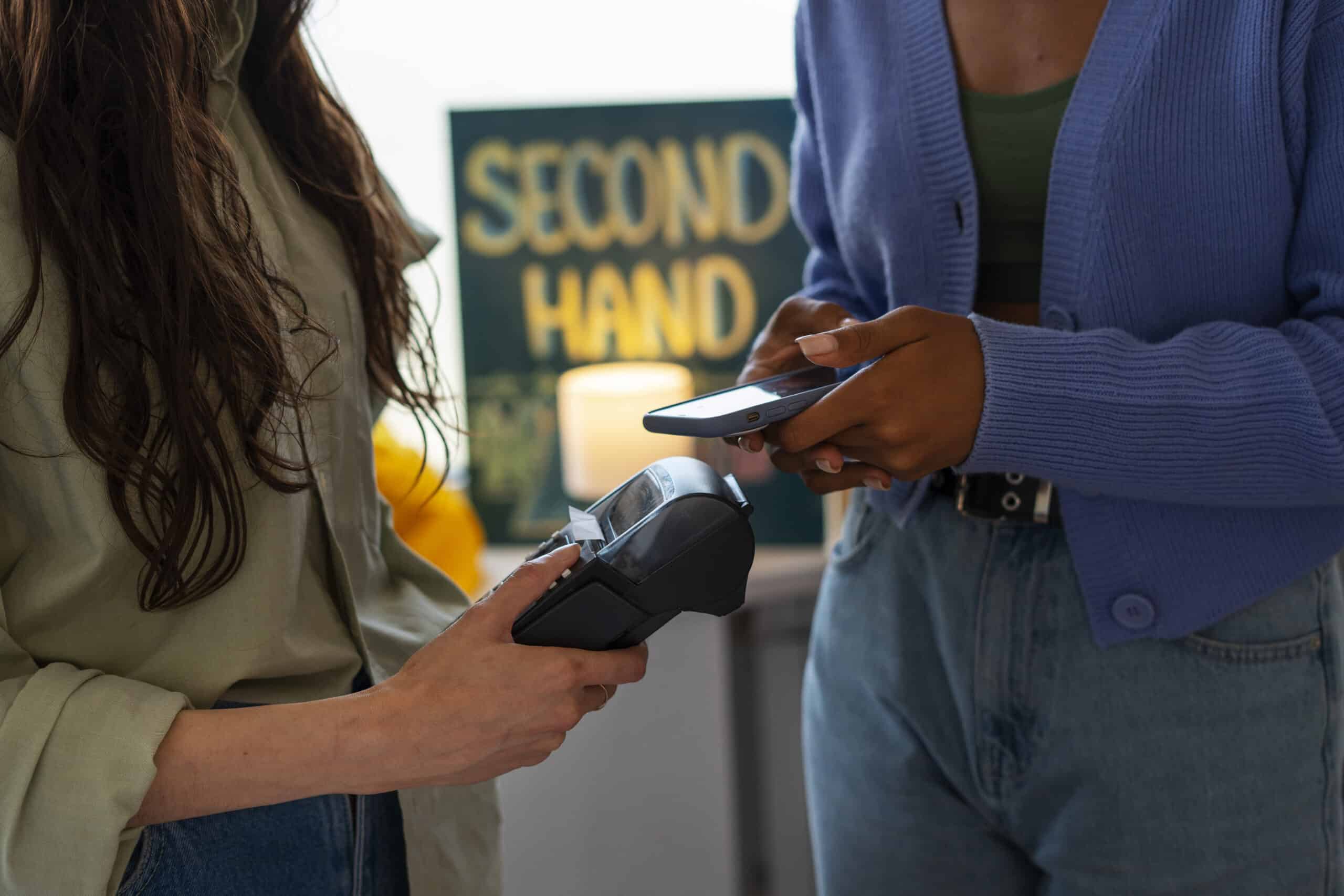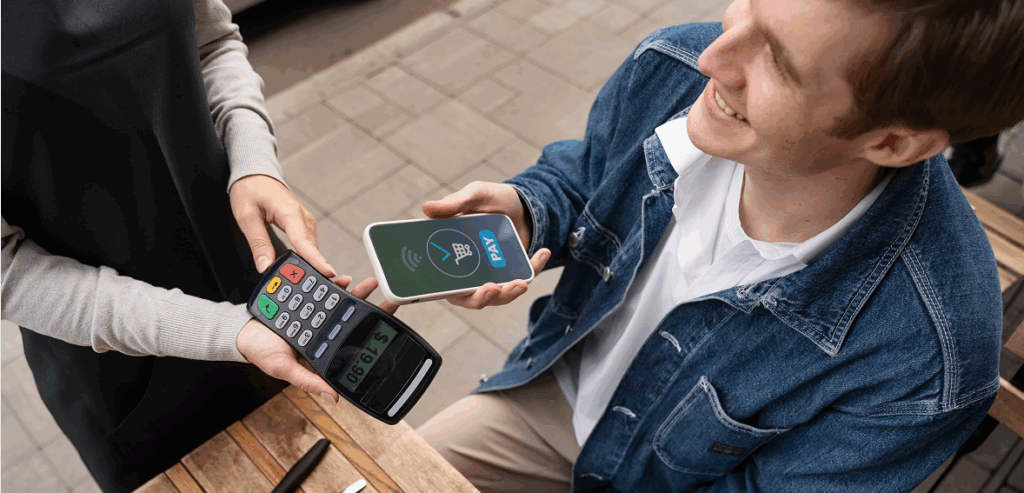
By Louise Peters July 16, 2025
In recent years, contactless payments have transformed the way consumers shop, dine, and interact with businesses. In Texas, where commerce spans from urban hubs like Dallas and Houston to smaller towns and rural communities, this payment trend has taken hold at a rapid pace. Fueled by convenience, speed, and safety, contactless technology is no longer a luxury—it is becoming a necessity for businesses that want to stay competitive and customer-focused.
As tap-to-pay cards, mobile wallets, and wearable payment devices become mainstream, Texas business owners must evaluate whether their systems are up to date. More importantly, they need to understand how contactless technology works, why it is growing so fast, and how it impacts operations and customer behavior.
What Are Contactless Payments?
Contactless payments allow customers to pay by holding a card, smartphone, smartwatch, or other enabled device near a payment terminal. The transaction is completed using near-field communication (NFC) technology, which enables secure data transmission between the customer’s device and the terminal.
These payments are typically faster than traditional chip or swipe methods. There is no need to insert the card, wait for authorization, or sign a receipt for most low-value purchases.
Common forms of contactless payments include:
- Tap-to-pay credit or debit cards with the contactless symbol
- Mobile wallets like Apple Pay, Google Pay, and Samsung Pay
- Wearables such as smartwatches or fitness bands with payment functionality
In Texas, these methods are being used more frequently in retail stores, restaurants, coffee shops, salons, med spas, gas stations, and even mobile services like food trucks or home repair providers.
Why Contactless Payments Are Growing in Texas

The growth of contactless payments in Texas mirrors national and global trends, but several state-specific factors have accelerated adoption.
Population Growth and Urbanization
Texas has been one of the fastest-growing states in the U.S., with urban centers like Austin, San Antonio, and Fort Worth seeing a surge in both population and business activity. More people means more transactions, and urban consumers often expect modern, tech-forward experiences—including payment methods.
Tech-Savvy Consumers
Cities like Austin and Dallas are known for their innovation culture and younger, digitally inclined populations. These consumers are comfortable using mobile wallets, wearables, and apps to manage their finances and shop on the go.
Post-Pandemic Preferences
The COVID-19 pandemic drastically shifted consumer habits across the state. With hygiene becoming a top concern, contactless payments offered a safer way to complete transactions without touching keypads or exchanging cash. These habits have continued well beyond the peak of the pandemic.
Retail and Service Innovation
Texas businesses are embracing innovation to stay ahead. From boutique retailers to national chains with locations across the state, many have updated their point-of-sale systems to support tap and mobile payments. Even industries like health and wellness, fitness, and hospitality are integrating contactless technology into their daily operations.
Benefits of Contactless Payments for Texas Businesses
Adopting contactless payment technology offers a range of benefits for local businesses—both in customer-facing improvements and backend efficiency.
Faster Transactions
Contactless payments are significantly quicker than chip card or magnetic stripe transactions. For businesses with high foot traffic, such as quick-service restaurants or busy retailers, this speed improves checkout flow and reduces wait times.
Improved Customer Experience
Offering modern payment methods shows customers that your business is up to date. It also provides convenience and flexibility, which are key to retaining loyal customers in today’s competitive market.
Enhanced Security
Contactless payments are often more secure than traditional card methods. NFC technology uses encryption and tokenization to protect card data. For mobile wallets, biometric authentication adds another layer of security.
Better Hygiene
While less urgent than during the pandemic, health concerns still play a role in consumer behavior. Contactless options reduce the need to touch shared surfaces like payment terminals or cash.
Increased Spend Per Transaction
Studies have shown that customers tend to spend more when using contactless payments. The ease and speed of tapping a card or phone can lead to higher average ticket sizes.
Industries in Texas Leading the Contactless Movement
Contactless payment adoption is spreading across nearly every industry in Texas, but some sectors have embraced it faster than others.
Retail
From major malls in Dallas to independent shops in Round Rock, retail is a major driver of contactless payment adoption. Clothing stores, bookstores, convenience stores, and electronics retailers are upgrading POS systems to cater to evolving customer preferences.
Hospitality
Restaurants, cafes, and bars in Austin, Houston, and beyond are increasingly offering contactless options. QR code menus, mobile order-and-pay platforms, and tap-enabled checkout have become standard in many venues.
Personal Services
Salons, med spas, fitness studios, and even veterinary clinics are turning to mobile payment terminals or tap-to-pay options to provide a seamless experience.
Healthcare
Clinics and dental offices across Texas are adding contactless payment at reception or using mobile apps for bill payments to improve patient convenience and administrative efficiency.
Transportation
Taxis, rideshare vehicles, toll booths, and parking garages in metro areas are offering contactless options as part of their transition to digital payment systems.
Challenges and Misconceptions About Contactless Payments
Despite the clear benefits, some Texas businesses are hesitant to fully adopt contactless payments. Common concerns include cost, complexity, and consumer readiness.
Cost of Upgrading Equipment
Some small businesses worry about the upfront investment in NFC-enabled terminals or POS systems. However, many modern systems already support contactless payments, and some payment processors offer hardware upgrades as part of a new contract or service plan.
Security Concerns
A lingering myth is that contactless payments are less secure because they do not require a PIN or signature. In reality, these transactions use encrypted data and generate unique transaction codes that cannot be reused.
Perceived Lack of Demand
Some merchants believe their customer base prefers cash or traditional cards. While this may still be true in certain rural or older demographics, statewide trends suggest that more Texans are embracing digital convenience, especially in urban and suburban settings.
Staff Training
Introducing new technology often means updating workflows. Employees must learn how to use new devices, assist customers with different payment methods, and troubleshoot issues on the spot. This requires time and training, but the learning curve is usually short.
How to Prepare Your Texas Business for Contactless Payments

Whether you’re upgrading your systems for the first time or enhancing existing features, preparing for contactless payments involves a few strategic steps.
Evaluate Your Current POS System
Check if your current payment terminal supports NFC. Look for the contactless symbol (four curved lines). If not, ask your payment provider about upgrade options or hardware leasing programs.
Talk to Your Payment Processor
Not all payment processors are created equal. Some specialize in retail, hospitality, or mobile services and may offer lower fees or better integration tools for your industry. Ask about transaction fees, security features, and support for digital wallets.
Train Your Staff
Teach your team how to process contactless transactions, answer common customer questions, and ensure a smooth experience at checkout. This can be part of broader customer service training.
Promote Your Payment Options
Let customers know you now accept contactless payments. Use in-store signage, update your website, and share the news on social media. Customers are more likely to try new payment methods when they see others using them.
Offer Contactless Tips and Loyalty Programs
Integrating digital payments with rewards programs or tipping prompts can encourage faster adoption and boost revenue. Many platforms now allow clients to earn loyalty points or leave tips directly during the contactless payment process.
Regulatory and Compliance Considerations in Texas
While there are no state laws in Texas that prohibit or restrict contactless payments, businesses must follow general regulations that apply to all card transactions.
PCI Compliance
All businesses that handle card payments must comply with PCI DSS (Payment Card Industry Data Security Standards). This applies whether you accept swipe, chip, or contactless payments. Compliance involves proper handling of cardholder data, secure network practices, and regular system updates.
Texas Deceptive Trade Practices Act
Under this law, businesses must not mislead customers about pricing, fees, or payment policies. Be transparent about any minimum purchase requirements for card payments or added fees.
ADA and Accessibility
If your business serves the public, make sure your payment terminals are positioned and designed for accessibility. Contactless devices should be usable by customers with disabilities, including those using wheelchairs or assistive technology.
Integrating Contactless Payments with Other Tech
Contactless payment readiness is part of a broader trend toward digital integration in business. By combining NFC payments with other technologies, Texas merchants can create a seamless experience for customers and streamline operations.
Mobile POS Systems
For businesses on the move—such as food trucks, pop-up stores, or mobile service providers—contactless payments paired with a mobile POS app allow for full-service checkout from a smartphone or tablet.
E-Commerce Integration
Some payment providers now offer tools that link in-store purchases with online accounts. This helps retailers track customer behavior, manage inventory, and build loyalty programs that span both digital and physical spaces.
Inventory and Sales Tracking
Modern POS systems that support contactless payments often include dashboards for real-time sales analytics. This helps you understand peak hours, best-selling products, and payment trends across locations.
The Future of Contactless in Texas
Contactless payments are more than a temporary trend—they represent the future of retail and service interactions. As more customers switch to mobile wallets and tap cards, businesses that adapt early will enjoy long-term advantages.
Emerging technologies will likely deepen the role of contactless payments. These include:
- Biometric authentication (face or fingerprint ID linked to payment)
- Voice-enabled purchases through smart assistants
- Integration with digital identity and driver’s license systems
For Texas merchants, keeping up with these changes means staying relevant, competitive, and connected to customer preferences.
Final Thoughts
The rise of contactless payments in Texas is reshaping how people pay and how businesses operate. What began as a convenience has become an expectation, especially among younger consumers and urban shoppers. Businesses that continue to rely on outdated systems risk losing customers to more agile competitors.
Fortunately, getting started with contactless payments does not require a massive investment. With the right equipment, service provider, and training, any Texas business can upgrade its checkout experience and provide faster, safer, and more convenient service.
In an economy where speed, flexibility, and trust matter more than ever, contactless payments offer a smart path forward. The question is no longer whether your business should accept them—but whether you’re ready to meet customer demand and embrace the future of payments.
FAQs
What is the main benefit of contactless payments for Texas businesses?
Contactless payments speed up transactions, improve customer satisfaction, and reduce physical contact during checkout, which is especially important in high-traffic locations.
Do I need special equipment to accept contactless payments?
Yes. Your payment terminal must support NFC technology. Many modern POS systems already have this feature built in.
Are contactless payments secure?
Yes. They use encryption and tokenization to protect card data. Mobile wallets add layers of security such as biometrics or device verification.
Do Texas customers actually use contactless payments?
Yes. Especially in urban areas, the adoption of mobile wallets and tap cards is growing rapidly. Younger consumers in particular expect these options.
Can I still accept traditional cards and cash?
Absolutely. Contactless payments are meant to expand your options, not replace them. The more flexibility you offer, the better the experience for your customers.